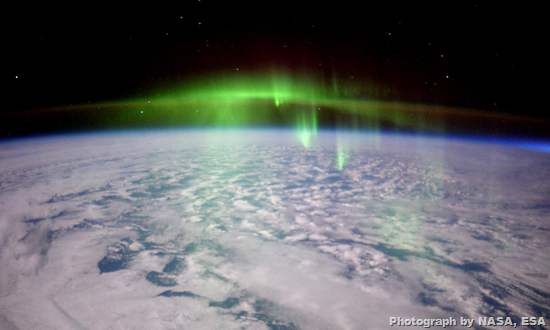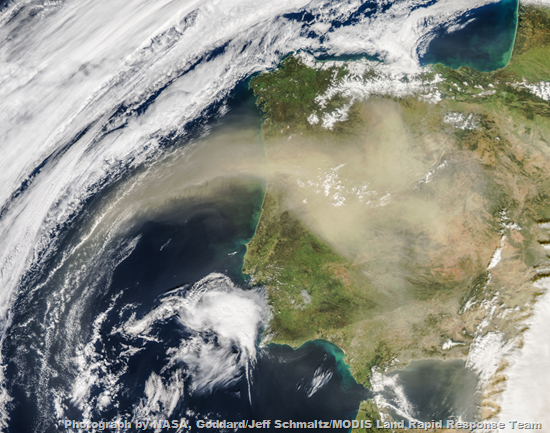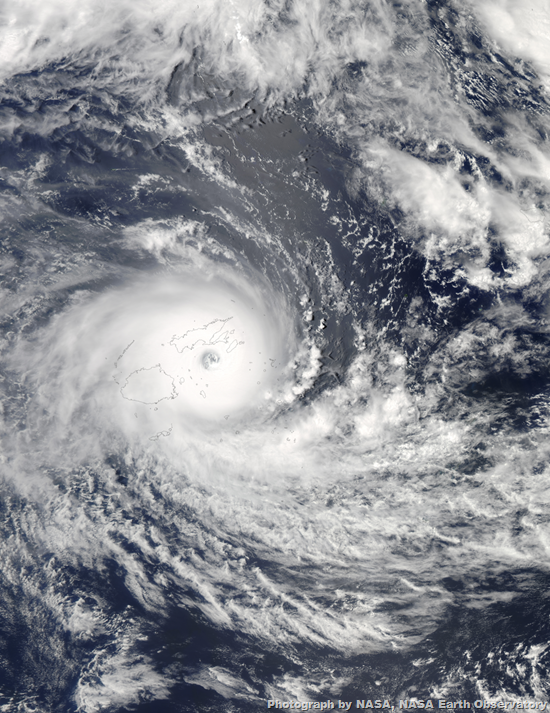
Week's Best Space Pictures: Astronauts Capture Stunning Aurora
By Michael Greshko, National Geographic News, 26 February 2016.
By Michael Greshko, National Geographic News, 26 February 2016.
Feed your need for heavenly views of the universe with our picks for the week’s most awe-inspiring space pictures. This week, a Martian crater shows off its kaleidoscopic color, satellites spot a record-breaking cyclone in the South Pacific Ocean, and astronauts aboard the International Space Station photograph a dazzling aurora hundreds of miles in the air.
1. Green Sheen

On February 23, 2016, astronaut Tim Peake of the International Space Station snapped this stunning image of the aurora while flying over the Pacific Ocean northeast of Australia.
2. In a Bubble
The Wolf-Rayet star WR 31a glimmers from about 30,000 light-years away, seen here by Hubble. The bluish nebula around it formed 20,000 years ago from the star’s shedded outer layers, and is expanding at 220,000 kilometres per hour.
3. Technicolour Terrain
NASA’s Mars Reconnaissance Orbiter captures the immense rock diversity of Hargraves Crater, shown here in colour and infrared. The crater lies on the northwestern margin of Isidis Planitia, a basin that’s home to many future Mars landing sites.
4. Three's Company
NASA’s Cassini spacecraft captures three of Saturn’s moons - Tethys, Enceladus, and Mimas - alongside Saturn’s rings. Tethys and Mimas both have enormous impact craters, making them look like real-world Death Stars.
5. Dust in the Wind
NASA’s Aqua satellite spots a dust cloud from the Sahara floating over Europe’s Iberian Peninsula. This dust is important: Saharan minerals, when blown across the Atlantic Ocean, fortify the soils of Amazonian rainforests.
6. Record Breaker
On February 20, 2016, a category 5 tropical cyclone ravaged the Pacific island nation of Fiji. Seen here in an image from NASA’s Aqua satellite, it was the second strongest cyclone to make landfall in recorded history, with winds topping 300 kilometres per hour.





No comments:
Post a Comment
Please adhere to proper blog etiquette when posting your comments. This blog owner will exercise his absolution discretion in allowing or rejecting any comments that are deemed seditious, defamatory, libelous, racist, vulgar, insulting, and other remarks that exhibit similar characteristics. If you insist on using anonymous comments, please write your name or other IDs at the end of your message.